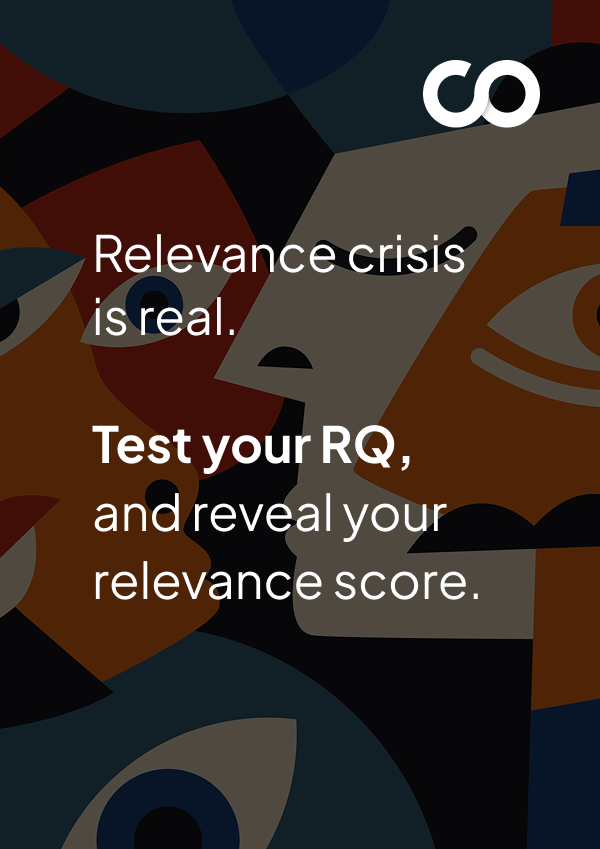AI and Data Analytics Services
AI and Data Analytics Services Solutions

Turn Your Data Into Your Unfair Advantage
Businesses generate over 400 million terabytes of data daily. Most of it never informs a single decision.
The core challenge here isn’t data collection. It’s turning that data into actionable intelligence. Many enterprises have robust data infrastructure, but still make decisions based on delayed reports and incomplete visibility.
The gap between collecting data and using it strategically continues to widen. At Codewave, we build AI and analytics solutions using machine learning models, predictive analytics platforms, and visualization tools like Tableau and Power BI. We’ve worked with over 400 businesses globally to create data strategies that drive measurable outcomes.
Our Approach:
Data Strategy: We help you map out a flexible, customized data and AI strategy to turn your data into a powerful competitive edge.
Implementation: Our structured approach delivers actionable insights and innovative solutions that fuel growth.
Continuous Monitoring: We build systems that continuously track, analyze, and predict data trends to keep your business ahead.
Visualization: We turn complex data into intuitive, interactive visualizations that tell your data’s story and make insights clear.
How We Can Help
Custom AI Models: We build machine learning models that predict outcomes, optimize operations, and enable data-driven decision-making.
Predictive Analytics: We implement forecasting models that help anticipate future trends, customer behavior, and potential business risks.
Data Integration: We integrate data from multiple sources, ensuring smooth data flows and eliminating silos for seamless operations.
Real-Time Dashboards: We create dynamic, real-time dashboards that provide instant access to the insights your team needs to make decisions faster.

The outcome:
Metric | Before Codewave | After Codewave |
Data Accessibility | Limited access to key data | 60% improvement in data accessibility |
Data Processing Speed | Slow processing times | 3X faster data processing |
Manual Work | High time spent on manual tasks | ~3 weeks saved per month |
Operational Costs | High operational costs | 25% reduction in operational costs |
Download The Master Guide For Building Delightful, Sticky Apps In 2025.
Build your app like a PRO. Nail everything from that first lightbulb moment to the first million.
Solutions That Translate Data Into Business Value
These aren’t theoretical frameworks. They’re practical systems designed to solve specific challenges that slow down enterprise decision-making.
Many enterprises collect massive amounts of data but lack a coherent plan for turning it into a competitive advantage. Teams work in silos, data sits in disconnected systems, and leadership doesn’t have visibility into what’s actually available or how to use it strategically.
We conduct comprehensive audits of existing data infrastructure, identify high-value opportunities, and create implementation roadmaps that align analytics capabilities with business goals. This includes defining KPIs, establishing governance frameworks, and prioritizing initiatives based on ROI.
Example: Imagine a retail chain struggling with inventory forecasting across multiple locations, with data scattered across legacy systems. We’ll map the data ecosystem, identify critical gaps in supply chain visibility, and build a phased strategy that unifies data sources to improve stock management and reduce excess inventory costs.
Most businesses react to problems after they’ve already impacted revenue or operations. Historical reports tell what happened last quarter, but they don’t prevent next quarter’s issues.
We build custom machine learning models that analyze patterns in historical data to forecast future outcomes. Whether it’s predicting customer churn, anticipating equipment failures, or forecasting demand fluctuations, these models get smarter over time as they process more data.
Example: Consider a logistics company losing revenue to unexpected vehicle breakdowns. We’ll develop predictive maintenance models that analyze sensor data, maintenance logs, and usage patterns to flag vehicles likely to fail within the next 30 days, allowing preventive maintenance that reduces downtime.
Data trapped in separate systems creates blind spots. Finance uses one platform, operations another, and sales a third. By the time someone manually consolidates reports, the insights are already outdated.
We design and implement automated data pipelines that extract information from multiple sources, transform it into usable formats, and load it into centralized analytics platforms. This creates a single source of truth that updates in real time.
Example: If a healthcare network needs to track patient flow across multiple facilities in real time, we’ll build pipelines connecting EMR systems, scheduling software, and capacity management tools. Administrators will see live dashboards showing bed availability, staff allocation, and patient wait times for better resource distribution.
Complex spreadsheets and static reports hide insights instead of revealing them. Executives need to see trends instantly, drill down into specific metrics, and share findings with stakeholders without requesting custom reports from analytics teams.
We create interactive dashboards using tools like Tableau, Power BI, and custom-built visualization platforms. These interfaces make data accessible to non-technical users while providing the depth analysts need for detailed investigation.
Example: Many manufacturing companies spend hours in weekly meetings interpreting performance reports. We’ll build role-specific dashboards that visualize production efficiency, quality metrics, and cost variances, reducing meeting prep time and helping teams catch issues before they become expensive problems.
Standard analytics tell what’s happening. AI-powered systems explain why it’s happening and what to do about it. Natural language processing and automated insights reduce the time between question and answer.
We implement AI solutions that analyze data patterns, surface anomalies, generate automated reports, and even answer business questions in plain English. These systems continuously monitor key metrics and alert teams when intervention is needed.
Example: Suppose an e-commerce platform wants to understand why conversion rates fluctuate across different customer segments. We’ll deploy AI models that analyze thousands of variables, identify friction points like mobile checkout issues, and recommend specific improvements to increase conversions.
As data volumes grow, so do compliance risks and security vulnerabilities. Many organizations don’t have clear policies around data access, retention, or quality standards, creating regulatory exposure and operational inefficiencies.
We establish governance frameworks that define data ownership, implement access controls, ensure compliance with regulations like GDPR and HIPAA, and create audit trails. This includes setting up data quality monitoring and automated compliance reporting.
Example: If a financial services firm faces regulatory scrutiny over unclear data lineage and inconsistent reporting, we’ll implement a governance framework with automated data cataloging, lineage tracking, and quality checks to streamline audit preparation and ensure compliance.
Tap into your data’s full potential with Codewave
Achieve Unmatched Business Agility with Data and AI
The difference between analytics systems that get used and those that get ignored comes down to practical design decisions made during implementation.
Data volumes don't stay constant. A system that handles today's load efficiently might buckle under next year's growth. We design analytics infrastructure that scales horizontally, adding processing power and storage capacity as data increases without requiring complete rebuilds.
In Action: Financial institutions often see data spikes during quarter-end reporting periods. We'll architect cloud-based data warehouses that automatically allocate additional compute resources during peak processing times, handle complex queries without slowdowns, then scale back down to optimize costs during normal periods.
Most enterprises can't afford to rip out existing technology and start fresh. Analytics solutions need to work alongside legacy systems, pulling data from SAP, Salesforce, custom databases, and everything in between without disrupting current operations.
In Action: A manufacturing company might have production data in one system, supply chain information in another, and financial records in a third. We'll build integration layers that connect these disparate sources, transforming data into consistent formats and creating unified views without requiring expensive system replacements.
If only data scientists can extract insights, analytics adoption stays limited to a small team. Business users need the ability to explore data, create reports, and answer their own questions without submitting IT tickets.
In Action: Marketing teams often need to analyze campaign performance across channels. We'll create intuitive interfaces where marketers drag and drop dimensions to build custom reports, filter data by relevant criteria, and share findings with stakeholders. No SQL knowledge required, no waiting for analyst availability.
Batch processing that runs overnight worked when decisions could wait until morning. Today's business environment requires insights available immediately. We implement streaming analytics that process data as it arrives, enabling responses measured in seconds rather than hours.
In Action: Retail operations need to respond to inventory issues as they happen, not the next day. We'll build real-time monitoring systems that alert managers the moment stock levels hit critical thresholds, trigger automated reordering, and update forecasts as sales patterns shift throughout the day.
Bad data leads to bad decisions. Manual quality checks don't scale and often miss issues until they've already caused problems. We implement automated validation rules, anomaly detection, and data lineage tracking that catch errors before they propagate through analytics pipelines.
In Action: Insurance companies process claims data from multiple sources with varying formats. We'll set up automated checks that flag inconsistencies, validate data against business rules, and alert teams to anomalies like sudden spikes in claim amounts or unusual patterns that might indicate fraud or data entry errors.
Some enterprises need on-premise solutions for regulatory reasons. Others prefer cloud platforms for scalability. Many want hybrid approaches that keep sensitive data internal while leveraging cloud processing power. We design systems that adapt to your infrastructure requirements.
In Action: Healthcare organizations must comply with strict data residency requirements. We'll architect hybrid solutions where protected health information stays in on-premise secure environments while analytics workloads run in the cloud, with encrypted connections and access controls ensuring compliance throughout the data pipeline.
Achieve Strategic Clarity With Codewave’s Systematic Approach
We start by understanding your current data landscape. This means mapping existing systems, identifying what data you're collecting, where it lives, and how teams currently access it. We also define success metrics and understand the business decisions that need better data support.
Based on the assessment, we create a roadmap that prioritizes initiatives by impact and feasibility. This includes selecting the right tools and platforms, defining data governance policies, and designing an architecture that aligns with your business goals. The strategy accounts for both immediate wins and long-term capabilities.
We build the systems, pipelines, and analytics frameworks outlined in the strategy. This involves connecting data sources, setting up processing infrastructure, creating dashboards and models, and ensuring everything integrates smoothly with existing workflows. Implementation happens in phases to minimize disruption.
Technology only delivers value when people know how to use it. We train your teams on new systems, create documentation, and establish best practices. This ensures adoption across the organization and reduces dependency on external support once the project transitions to your internal teams.
Analytics needs evolve as businesses change. We set up monitoring systems that track performance, data quality, and usage patterns. Regular reviews identify optimization opportunities, and we refine models and processes based on real-world results to ensure continued improvement.
Data Solutions Across Industries
Industry | How We Help |
Fraud detection models, risk analytics, customer behavior prediction, and regulatory compliance reporting | |
Patient outcome analytics, operational efficiency tracking, predictive diagnostics, and HIPAA-compliant data systems | |
Inventory optimization, demand forecasting, customer segmentation, and personalized recommendation engines | |
Claims pattern analysis, underwriting automation, fraud detection, and customer lifetime value modeling | |
Consumption forecasting, grid optimization, equipment monitoring, and sustainability metrics tracking |
Every industry faces unique data challenges. But the underlying question remains the same: how relevant is your organization in today’s pro-AI, data-first ecosystem?
The Technology Behind Our Solutions
The right combination depends on your specific requirements, existing infrastructure, and team capabilities. We don’t force a predetermined stack. We recommend what makes sense for your situation.
Here’s what powers our data and AI implementations.
Category | Technologies | What They Do |
Data Storage & Warehousing | Amazon Redshift, Google BigQuery, Snowflake, Azure Synapse | Store massive data volumes in cloud-native warehouses optimized for analytical queries |
Data Processing | Apache Spark, Apache Kafka, AWS Glue, Azure Data Factory | Process and transform data at scale, handle streaming data, and automate ETL workflows |
Machine Learning | TensorFlow, PyTorch, scikit-learn, Amazon SageMaker, Azure ML | Build and deploy predictive models, from simple regression to deep neural networks |
Business Intelligence | Tableau, Power BI, Looker, Qlik Sense | Create interactive dashboards and self-service analytics tools for business users |
Data Integration | Fivetran, Talend, Apache NiFi, Informatica | Connect disparate data sources and automate data movement across systems |
Analytics & Programming | Python, R, SQL, Jupyter Notebooks | Develop custom analytics, statistical models, and exploratory data analysis |
AI & NLP | OpenAI GPT, Hugging Face, spaCy, BERT | Power conversational interfaces, text analysis, and natural language understanding |
Data Governance | Collibra, Alation, Apache Atlas, AWS Lake Formation | Manage data catalogs, lineage tracking, access controls, and compliance monitoring |
Visualization Libraries | D3.js, Plotly, Highcharts, Chart.js | Build custom interactive visualizations for specialized use cases |
Cloud Platforms | AWS, Google Cloud Platform, Microsoft Azure | Provide scalable infrastructure, managed services, and deployment environments |
We transform companies!
Codewave is an award-winning company that transforms businesses by generating ideas, building products, and accelerating growth.
A network of excellence. Our partners.
Results From Real Implementations
Wondering how data and AI solutions perform beyond the pitch deck? Our clients have seen measurable improvements in decision-making speed, operational efficiency, and strategic clarity.
Analytics That Answer the Most Critical Questions
We build data systems that deliver the insights you need, not dashboards that look impressive but sit unused. Stop working with incomplete visibility. Let’s create an analytics infrastructure that genuinely serves your business.
Contact Codewave for a strategy session today.
Frequently asked questions
Timeline depends on scope and complexity. A basic dashboard implementation might take 6-8 weeks. A comprehensive data strategy with ML models and integration across multiple systems usually requires 3-6 months. We work in phases to deliver value incrementally rather than waiting for everything to be complete.
Most enterprise data is. Part of our assessment phase involves identifying data quality issues and gaps. We build cleaning and validation processes into the implementation, and often discover that even imperfect data can generate valuable insights when properly structured and analyzed.
Rarely. We design solutions that integrate with current infrastructure. Whether you’re using legacy databases, modern cloud platforms, or a mix of both, we build connections that pull data without requiring expensive system replacements or major operational disruptions.
We establish clear success metrics during the strategy phase based on your business objectives. This might include time saved on reporting, cost reductions from improved forecasting, revenue increases from better targeting, or faster decision-making cycles. We track these metrics throughout implementation.
Analytics systems require ongoing optimization as business needs evolve. We typically transition day-to-day management to your internal teams while remaining available for enhancements, scaling, and strategic guidance. Training and documentation ensure your team can maintain and extend the systems independently.
































































